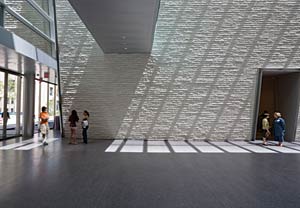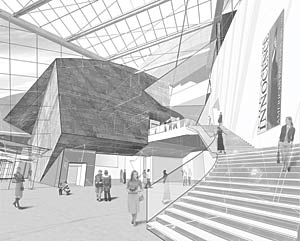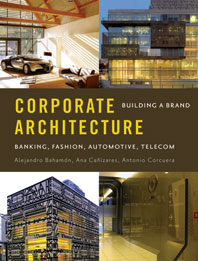Today’s architectural post- traumatic-stress syndrome—call it Bilbao Fatigue—was brought on by a glut of increasingly outré museums calculated to attract media attention, rather than enhance understanding of art. Copious evidence confirms the folly of overspending spurred by the premise that extravagant museum expansions will pay for themselves with increased attendance and tourism revenues. It took years for the Basque government to recoup its enormous investment in the Bilbao Guggenheim, because the museum’s director, Thomas Krens, off-loaded almost all up-front expenses on the overeager franchisee.


Several institutions that dreamed of Bilbao-like bonanzas have had rude awakenings. Santiago Calatrava’s bird-shaped Quadracci Wing for the Milwaukee Museum of Art so exceeded cost estimates that municipal authorities were forced to bail out the city’s foundering cultural system. Big budget overruns have compelled the Denver Art Museum and the Royal Ontario Museum in Toronto—both designed by Studio Daniel Libeskind—to lay off large numbers of employees.
I got a sinking feeling when I read a recent New York Times dispatch on the Art Museum of Western Virginia, in Roanoke, designed by Randall Stout Architects and scheduled to open in November. This $66 million, kind-of-Libeskind crystalline composition will cost at least $20 million more than initial projections. But, the Times reported, local optimists “are betting that the museum will be an economic engine for the city.” I wish them all the luck that has eluded their counterparts in Milwaukee, Denver, and Toronto.
I applaud cities that subsidize museums rather than stadiums, but officials should just level with taxpayers, admit that spending on culture is a noble thing, and forget the sham rationale of financial return from what ought not to be touted as an “investment.” Before today’s casinolike art market, principled dealers and auctioneers used to discourage the notion of collecting as speculation. Buy what you love, they used to advise, and if you make a profit, good for you. If not, good for you, too, because you’ll have been enriched by living with a thing of beauty. The same caveat applies to the sponsorship of cultural architecture.
Fortunately, not every museum official today believes that extravaganza architecture is imperative for institutional survival. Lisa Phillips, director of the recently completed New Museum of Contemporary Art in New York City (page 132), wanted a building that would signify her institution’s sensitivity to pathbreaking developments in architecture commensurate with its impressive track record in identifying the best new art. Phillips looked beyond the profession’s most sought-after museum designers, hired the then-little-known Tokyo firm SANAA, and wound up with the sleeper museum hit of recent years. Coming in on budget at $50 million (a modest figure for New York City), this hypnotic structure is a multiple revelation, striking an enviable balance between economy and elegance, architecture and art.
Apart from the New Museum’s self-evident beauty and ingenious urbanism (which works wonders with an unpromising site), this instructive scheme offers a new paradigm for a building type that has lost its way in mad pursuit of expensive thrills and cheap sensations. The widespread apprehension that the Bilbao Effect has mutated into the Bilbao Plague is reflected in Renzo Piano’s flourishing museum practice. I’m convinced that many of Piano’s patrons admire this indubitable master for all the wrong reasons: not so much for what they think he can do, but for what they’re certain he won’t do—saddle them with an eccentric building unlikely to pass the test of time.
The museum’s overall influence on contemporary architecture has been enormous, especially when one looks at unrelated building types. Frank Gehry’s Stata Center at MIT in Cambridge, Massachusetts, may nominally be an information-technology facility, but its organizational conception stems directly from his revolutionary rethinking of the museum. Coop Himmelb(l)au’s BMW Welt (page 86) in Munich might seem incongruous in a survey of current museum design, but this Bavarian Bilbao suggests there is indeed little difference anymore between marketing art and marketing cars, as the boundaries between culture and commerce become blurrier than ever.
A museum dramatizes and reaffirms, as civic architecture always has and always will, the values of those who build it. A sobering thought often occurs to me these days: How will future generations interpret these architectural signs of our times? I imagine our descendants looking back in bewilderment at many of the museums built around the turn of the millennium and asking, “What could they have been thinking?”





Post a comment to this article
Report Abusive Comment